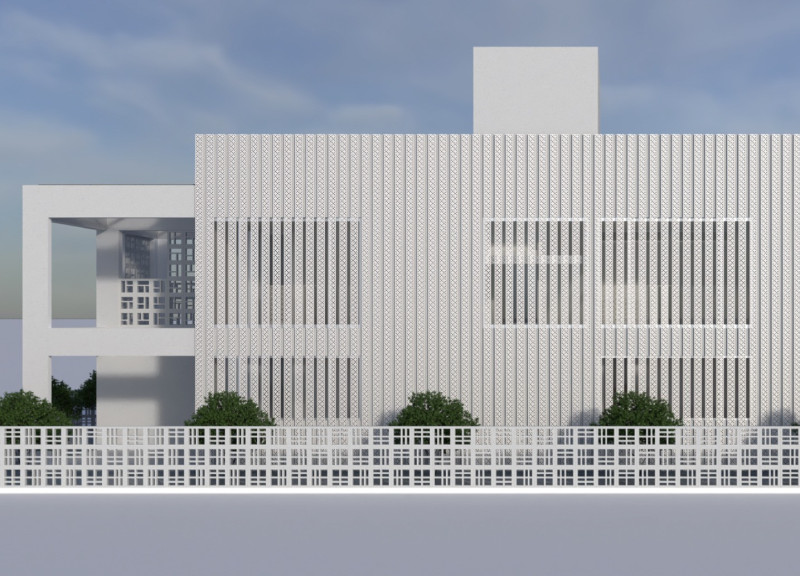5 key facts about this project
At first glance, the design presents a cohesive blend of form and context, characterized by a carefully curated choice of materials that resonate with the surrounding architecture. The use of brick and concrete provides a sense of permanence and stability, while expansive glass elements enhance transparency and connection to the outdoors. This combination of materials has been strategically employed, allowing natural light to permeate the interiors and create a welcoming atmosphere that is crucial for communal interaction. The thoughtful layout further emphasizes usability, with open-plan spaces encouraging movement and flexibility throughout.
One of the project's notable features is its spatial organization, which prioritizes accessibility and flow. Public areas are designed with generous dimensions, accommodating various functions and fostering a sense of community. This design choice not only addresses the immediate needs of its users but also enhances user experience through carefully considered pathways that connect different zones of the building. The integration of green spaces within the project further accentuates this ethos, providing natural areas for relaxation and social gatherings amidst the urban surroundings.
The design also demonstrates a commitment to sustainability principles, incorporating elements such as green roofs and rainwater harvesting systems. These features are not mere afterthoughts; they are integral to the architectural concept, reinforcing the building's role as an environmentally-conscious addition to the urban fabric. The architect’s approach to sustainability is evident in the selection of materials and incorporation of energy-efficient systems, promoting a lifestyle that respects and preserves the local ecosystem.
Unique design approaches are widely reflected in the building’s facade, which employs a rhythmic pattern of materials that creates visual interest while maintaining a clear identity. The interplay of solid and void introduces dynamic change throughout the day, as shadows shift with the sun’s movement, further engaging the observers. Each design element has been carefully considered to serve not only aesthetic purposes but also functional needs, illustrating a comprehensive understanding of architecture as a multifaceted discipline.
As one delves deeper into the architectural essence of this project, it becomes clear that the interplay between interiors and exteriors is meticulously engineered. Transition spaces such as lobbies and corridors are artistically designed to extend the experience of the outdoors into the building while maintaining a cohesive flow of movement. This transition is vital for creating an inviting ambiance that encourages both social interaction and private reflection.
For those intrigued by architectural plans and sections, a closer examination of the project's layout reveals various innovative room configurations and spatial relationships. Designers have skillfully integrated spaces that can adapt to different functions, reflecting contemporary needs for versatility in living and working environments. This adaptability is a hallmark of modern architecture, allowing for seamless transitions between various activities throughout the day.
The architectural ideas behind this project reflect a commitment to community, sustainability, and engagement, posing it as a model for future developments in urban settings. It serves as an important reminder of architecture's potential to shape experiences and foster relationships, attuning itself to the needs of its environment and its inhabitants.
Readers interested in gaining further insight into this architectural endeavor are encouraged to explore the full presentation of the project, delving into detailed architectural designs, sections, and plans that illustrate the thought processes and intentions behind its creation. This examination not only enlightens the viewer about the specific architectural choices made but also invites them to consider the broader implications of such designs in contributing to our urban landscapes.


























